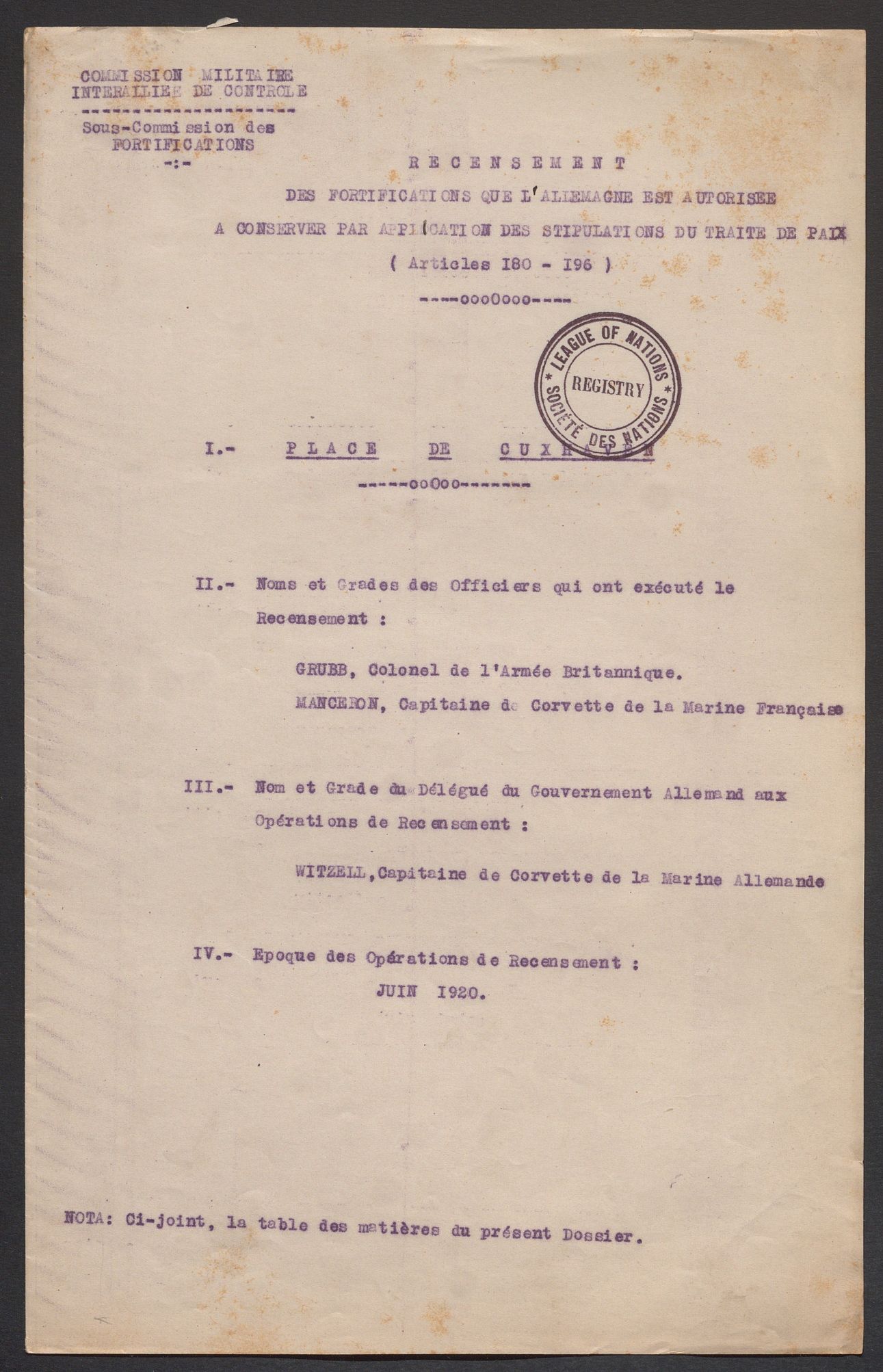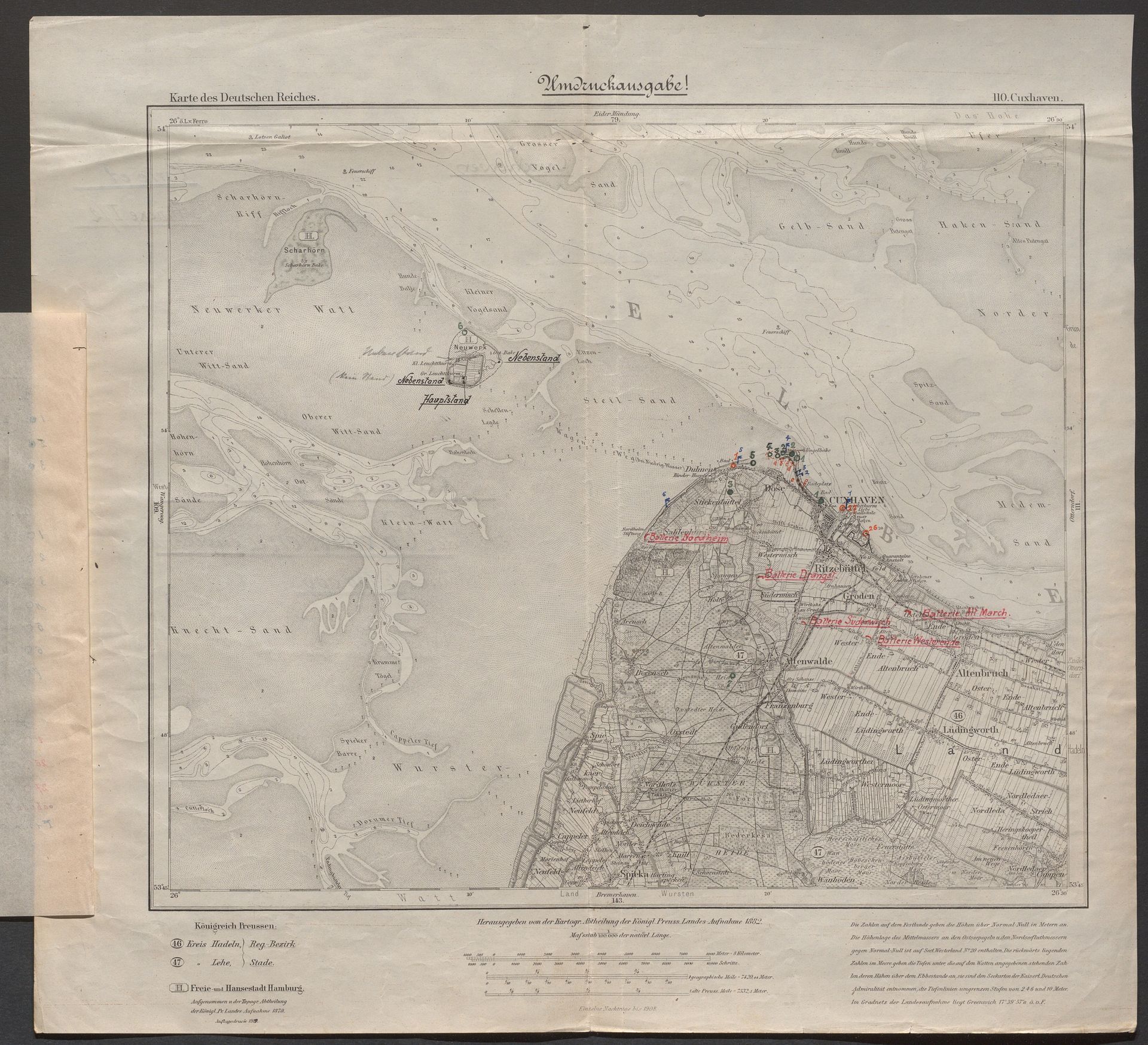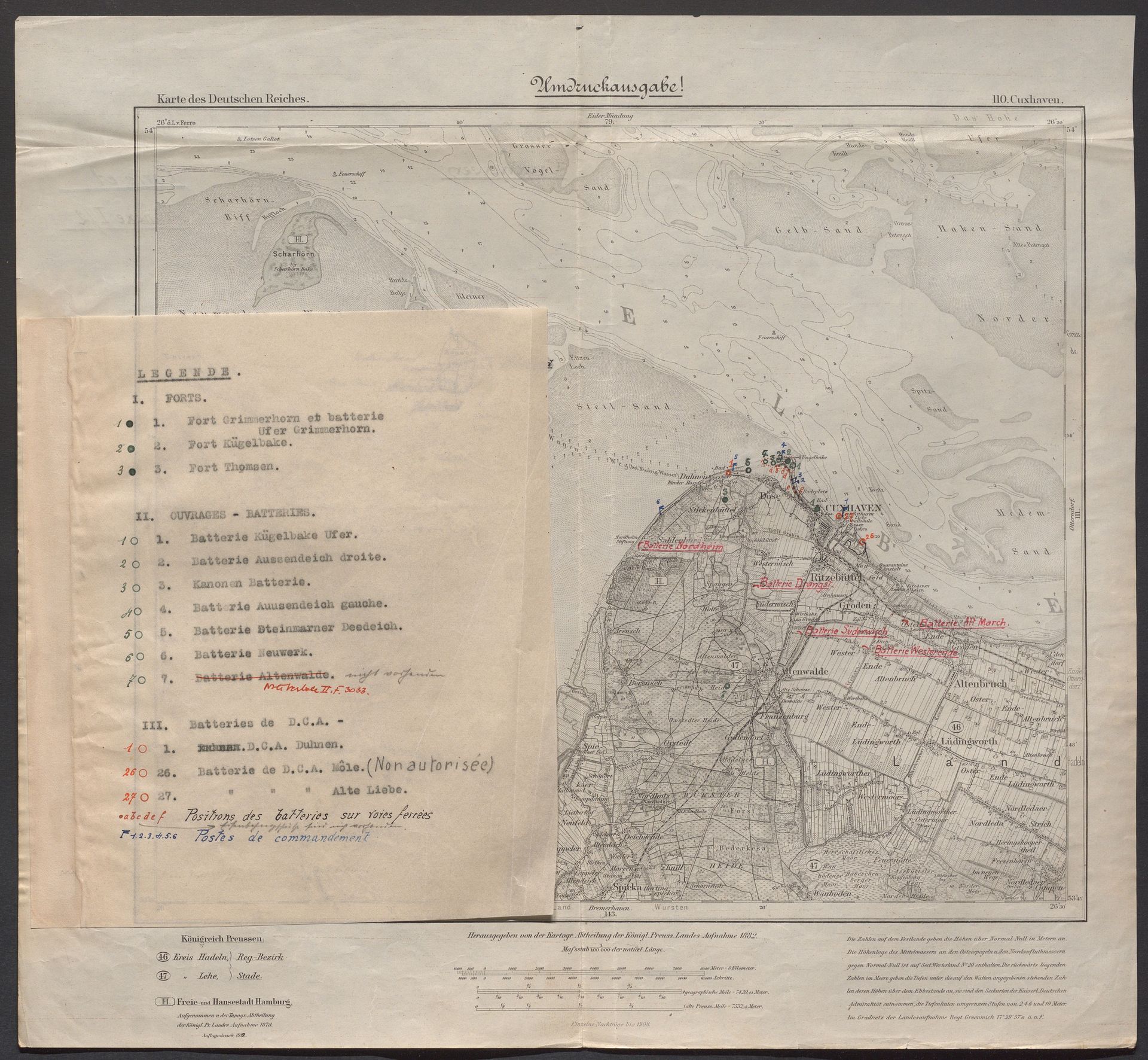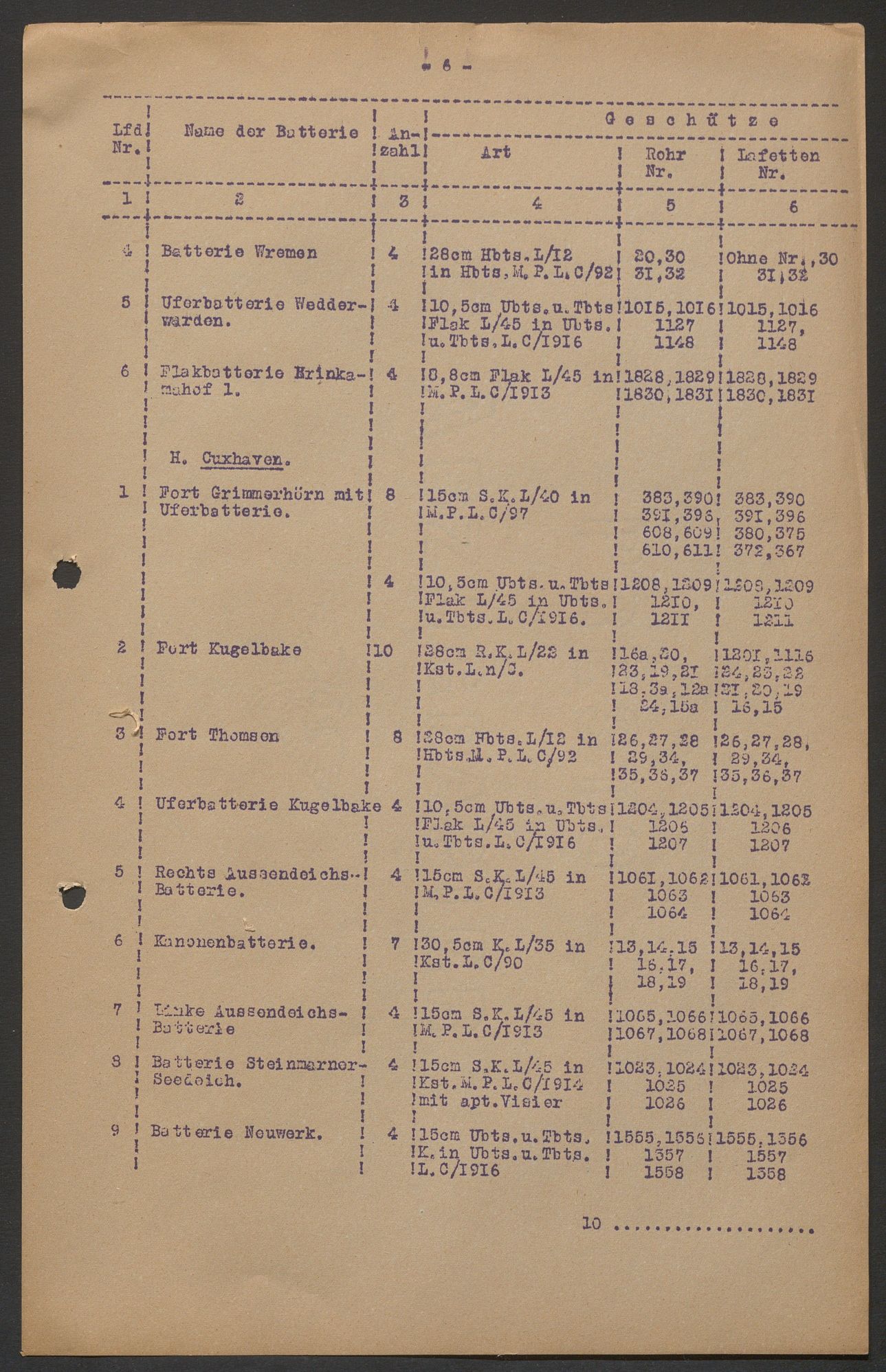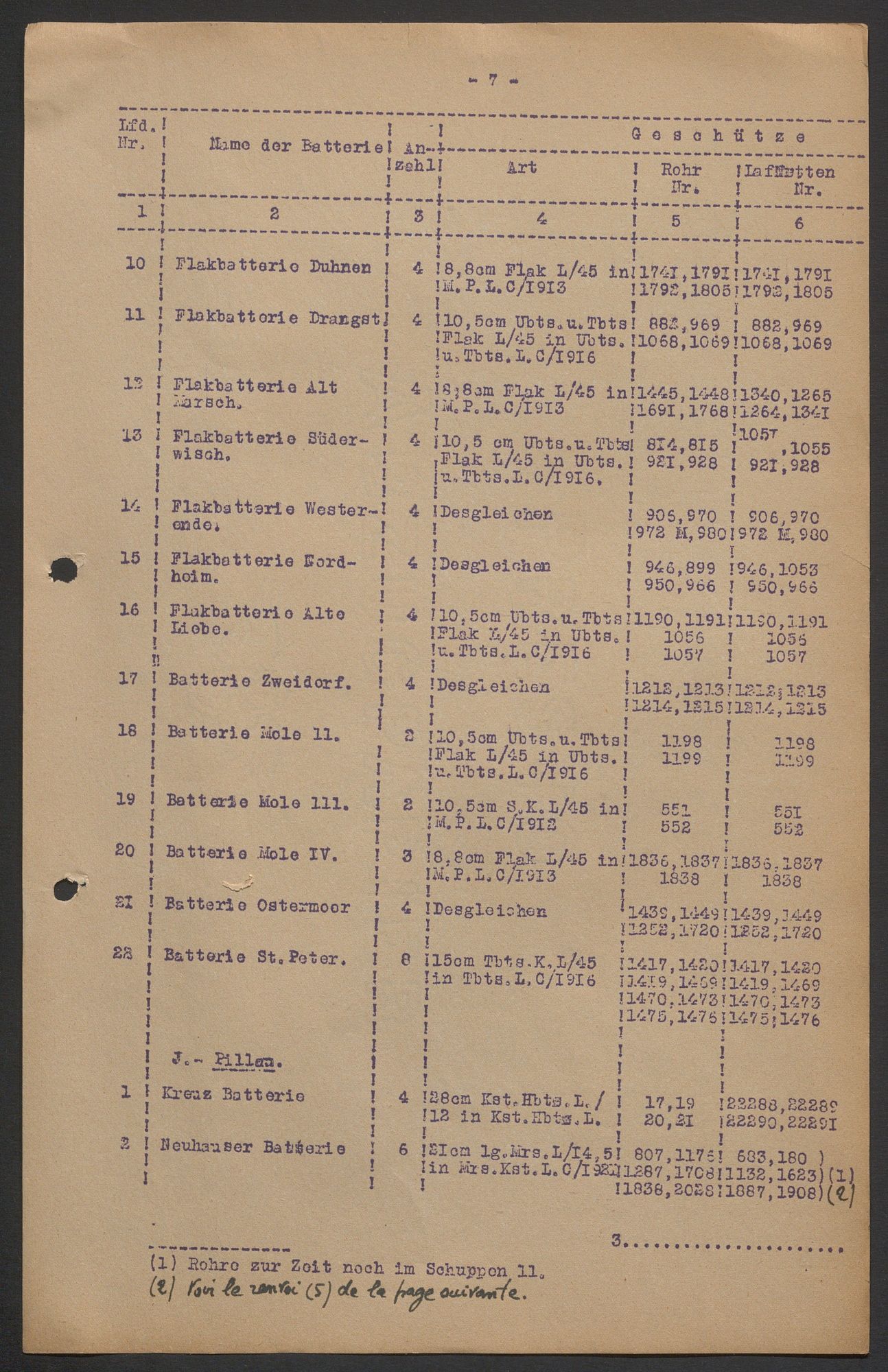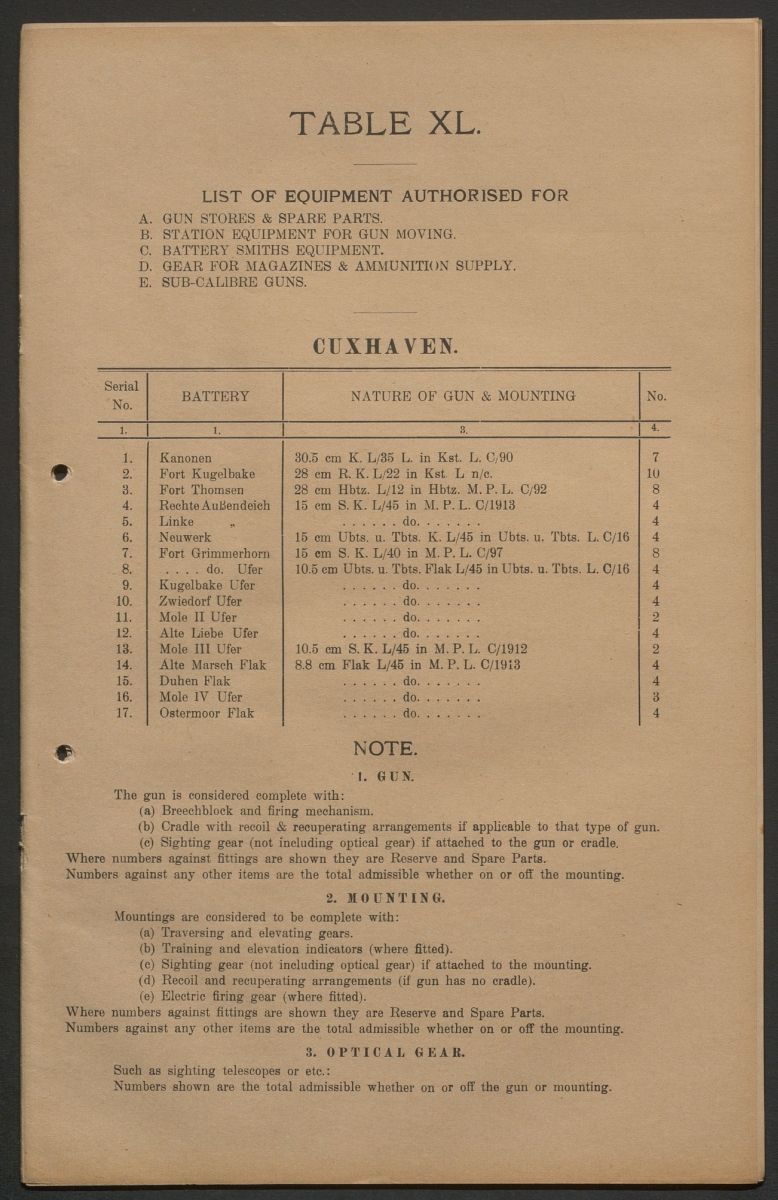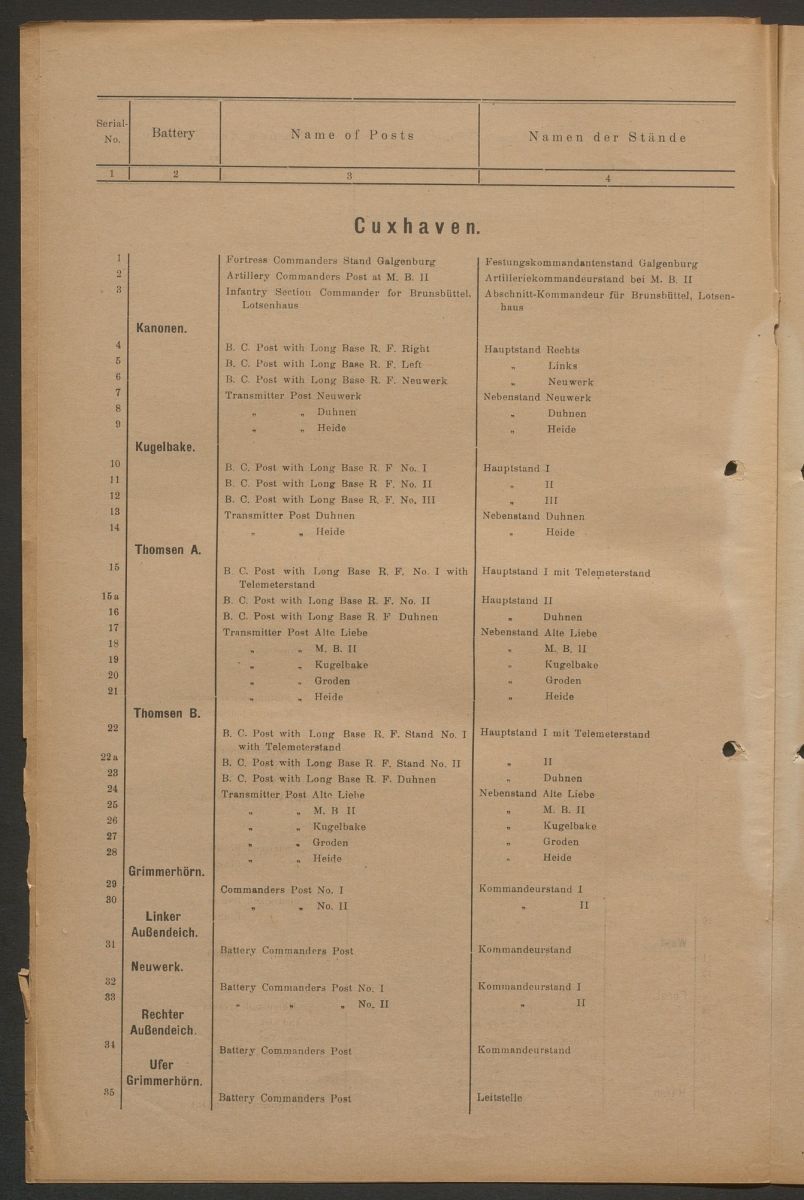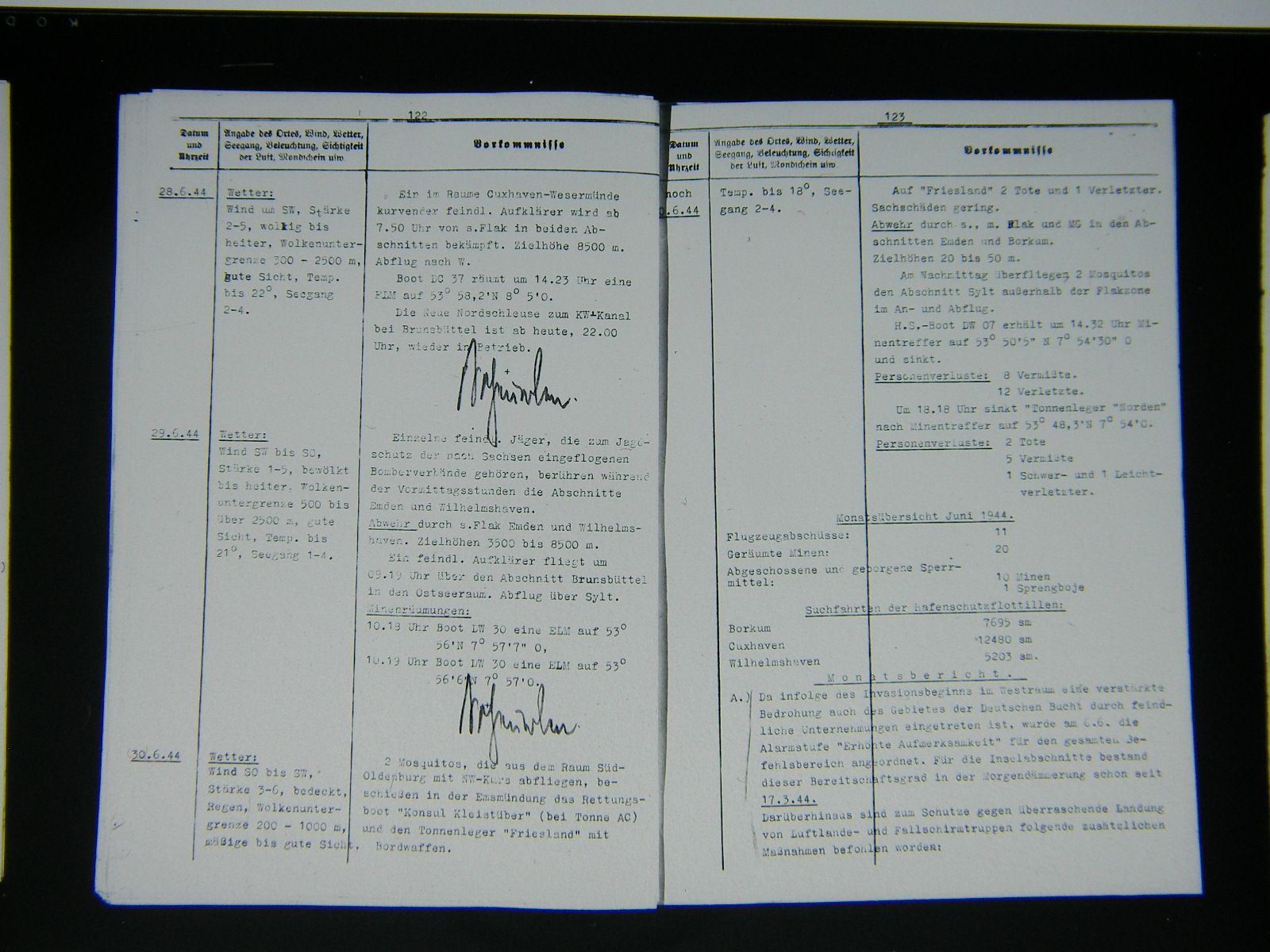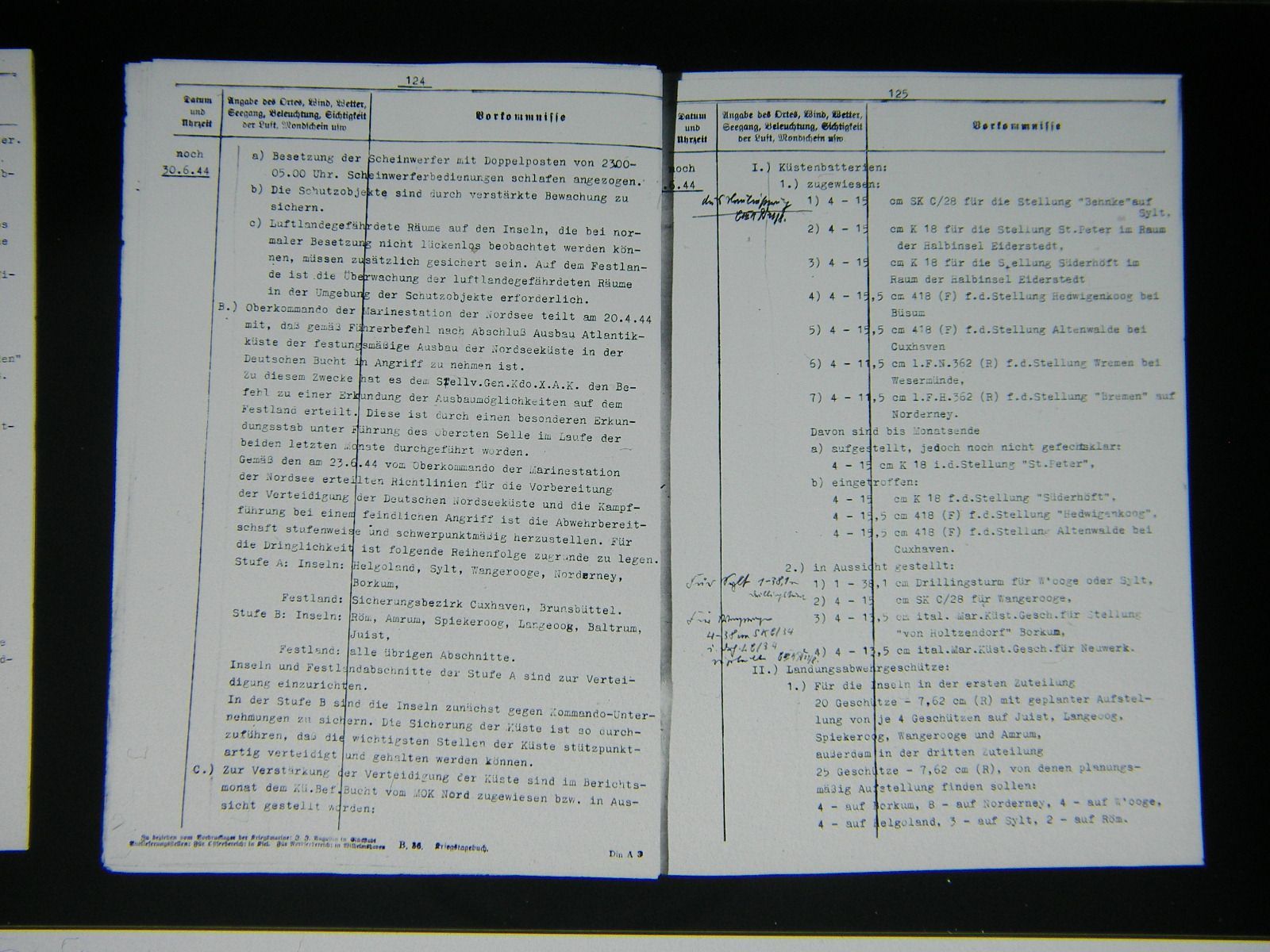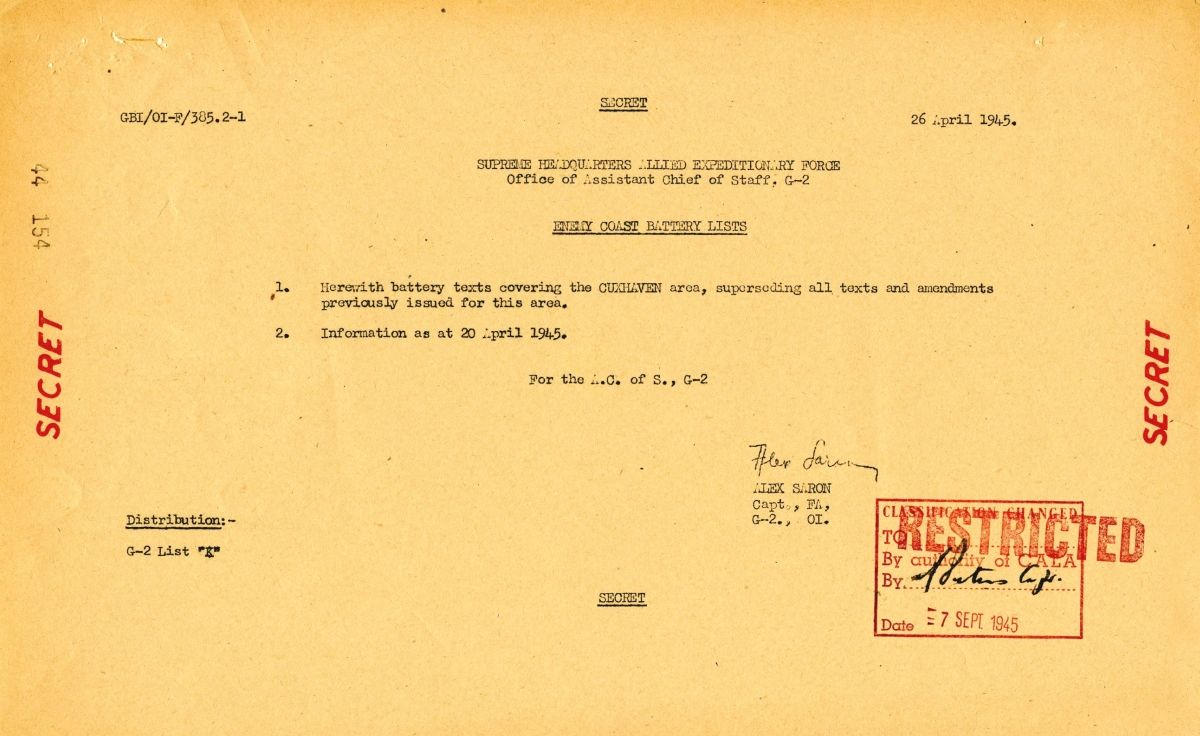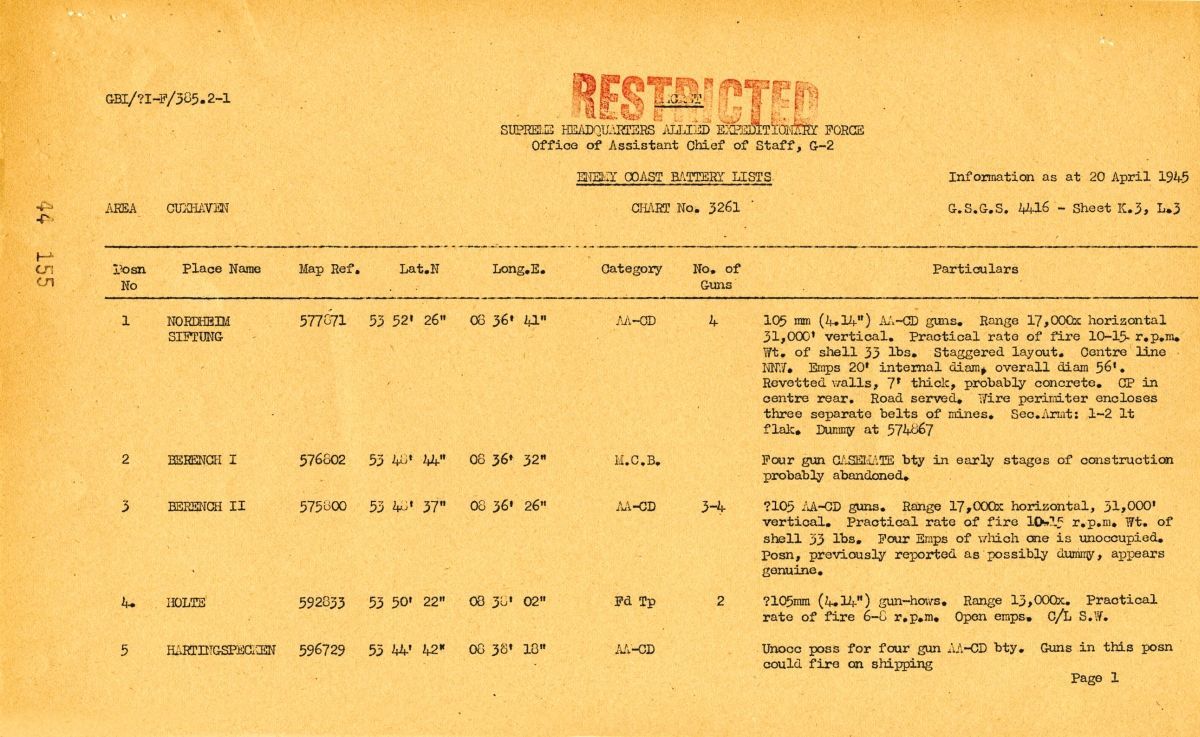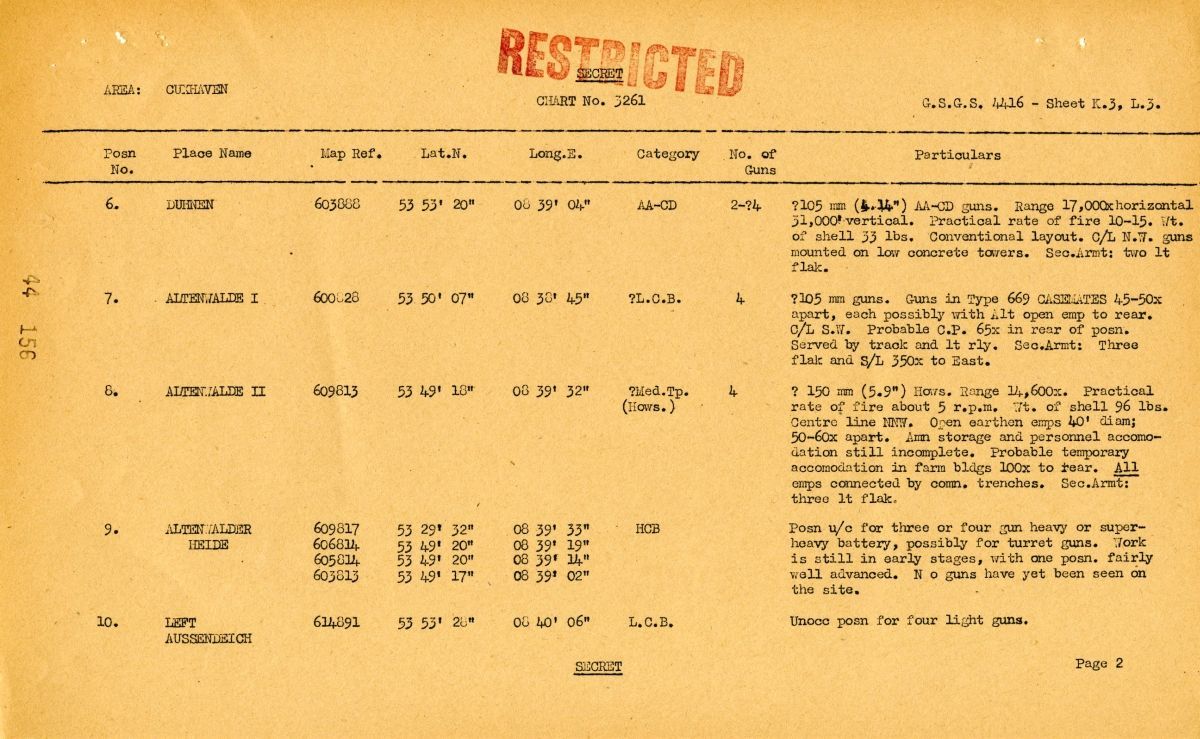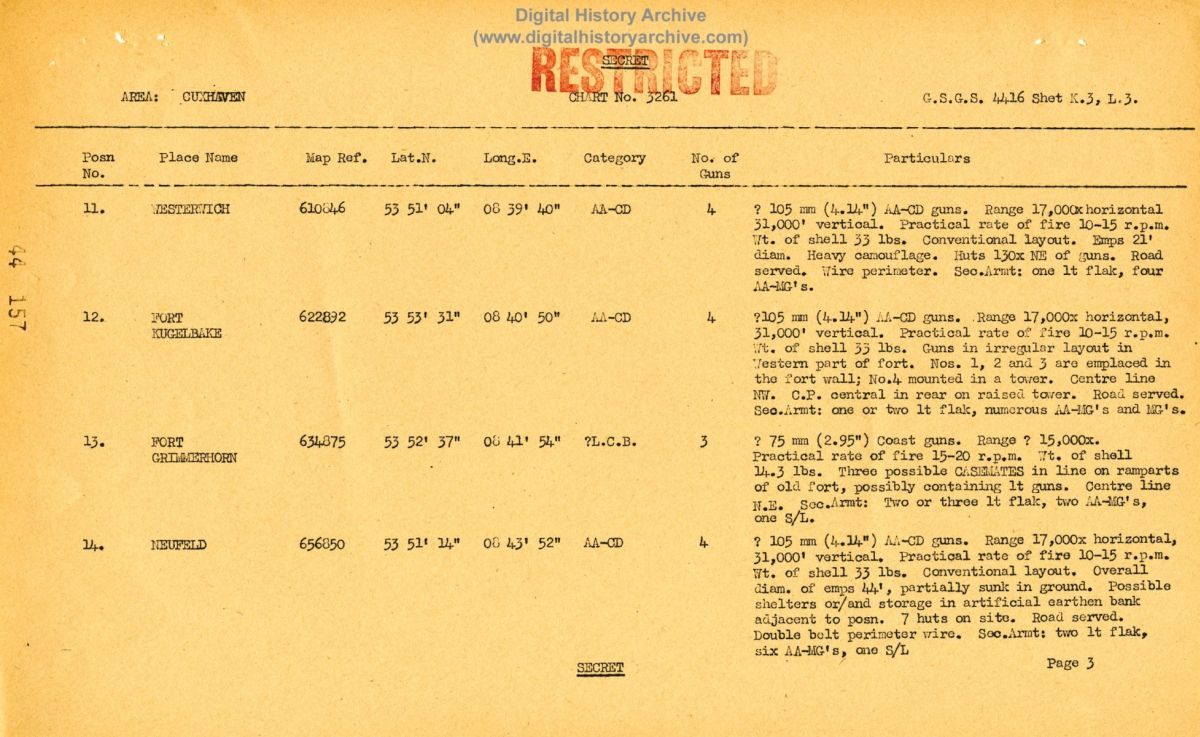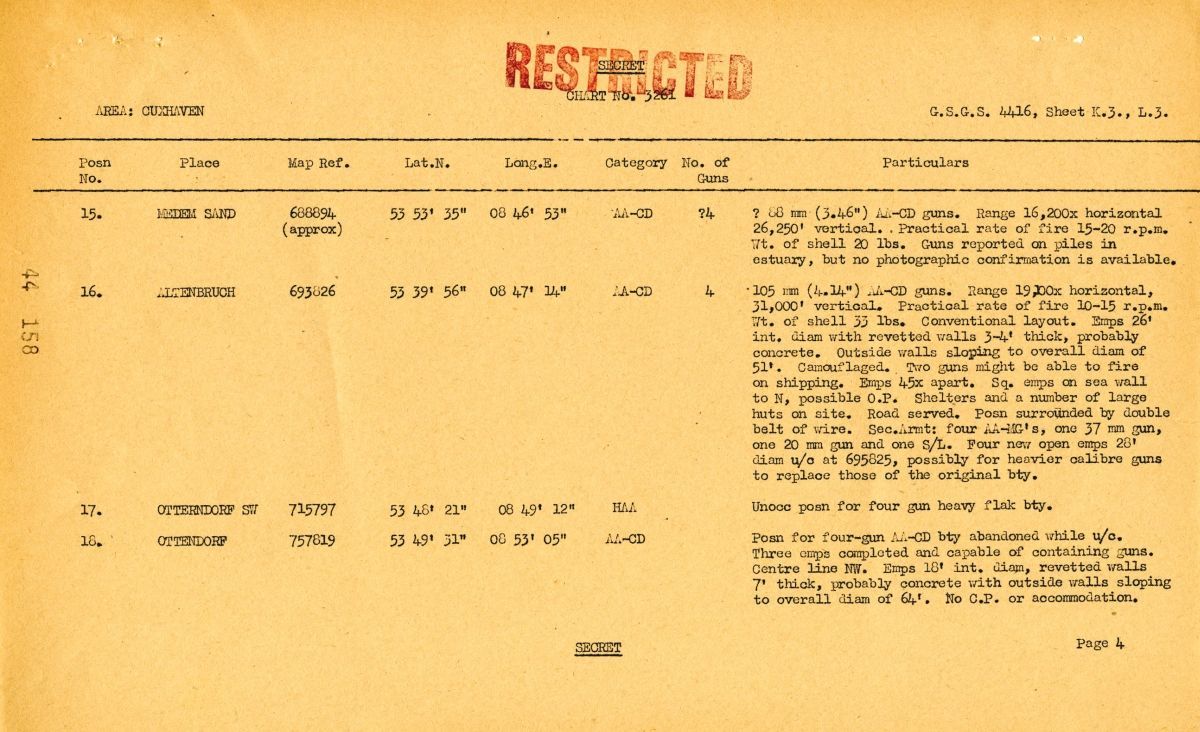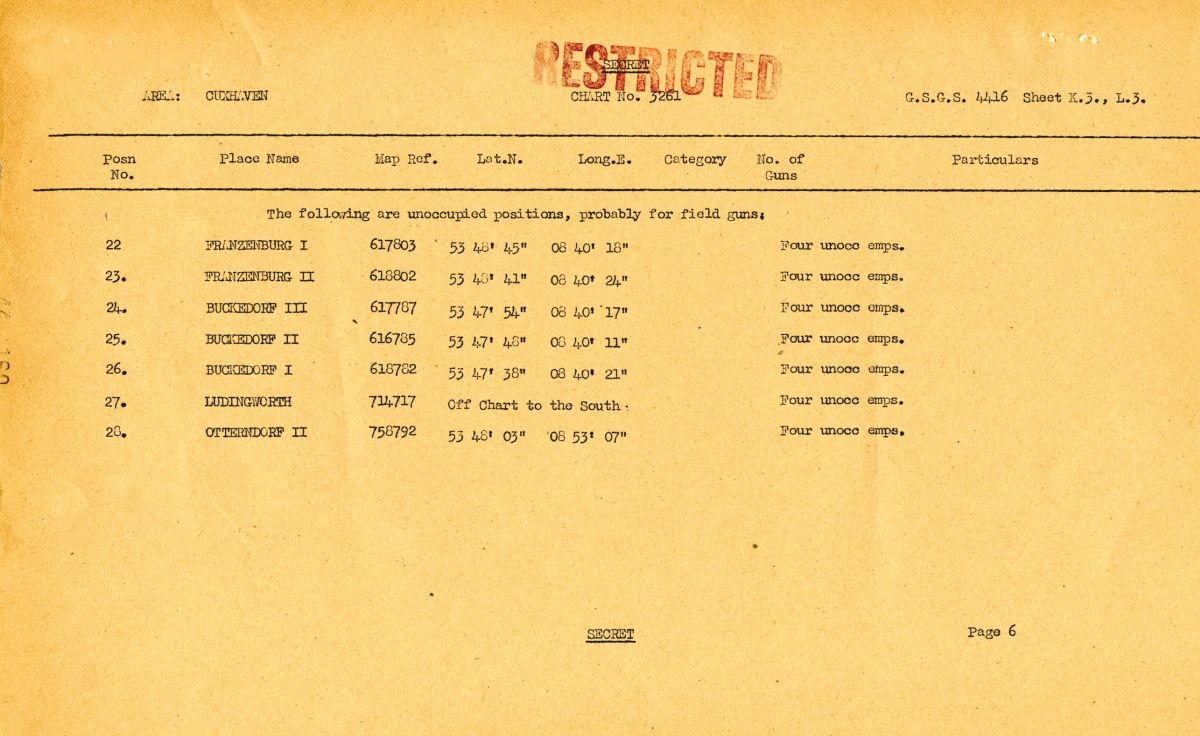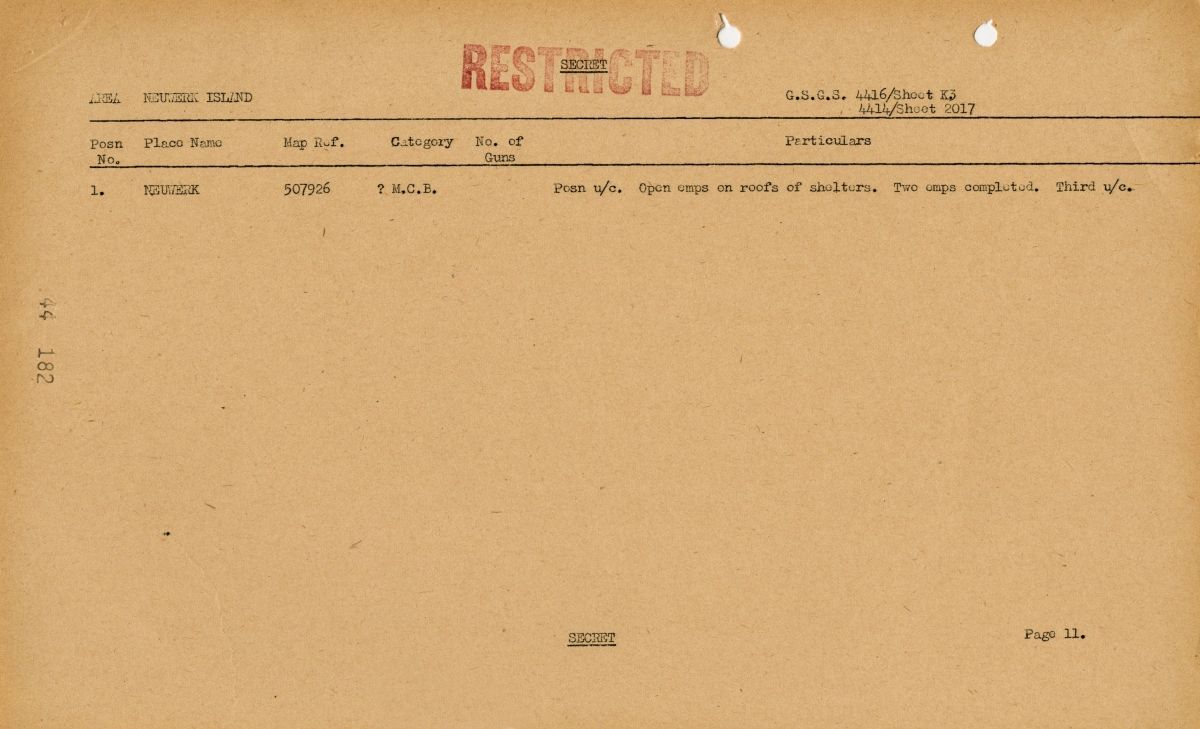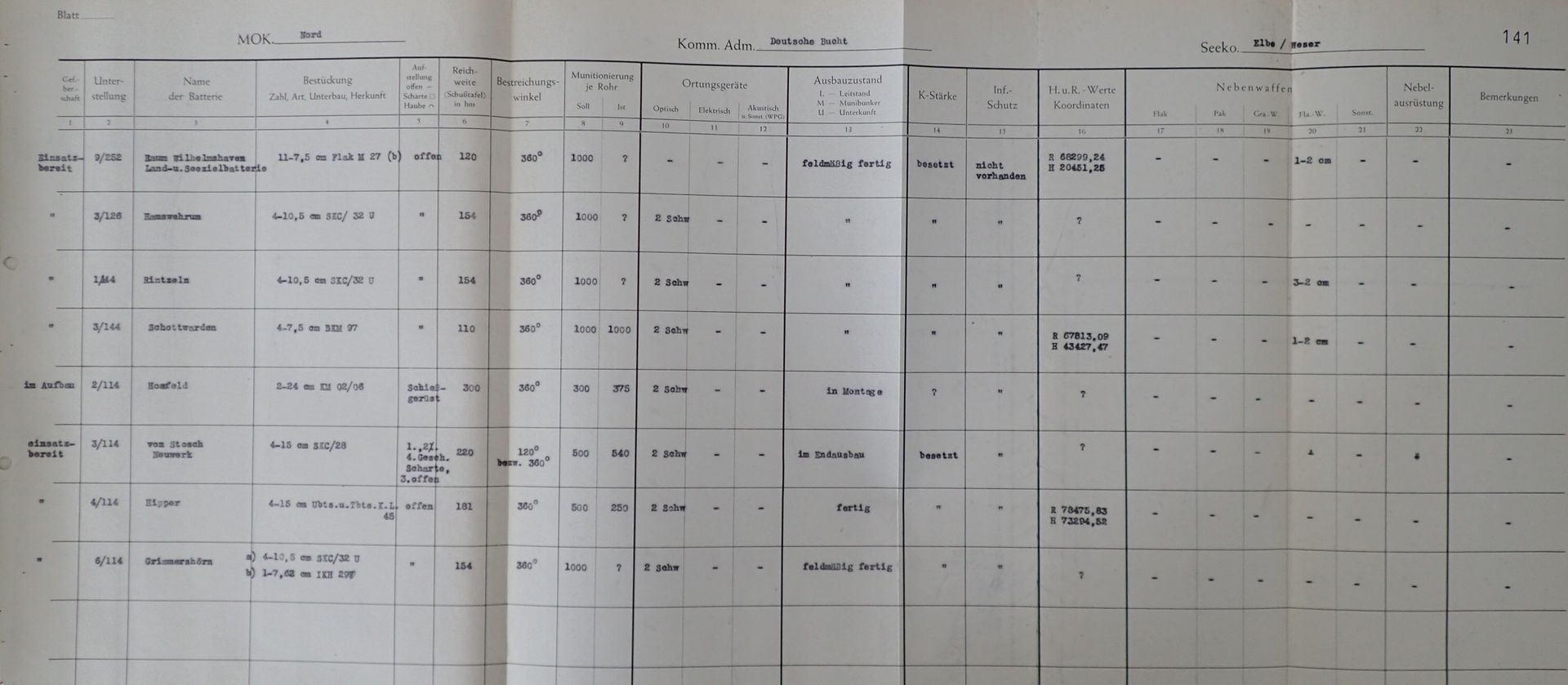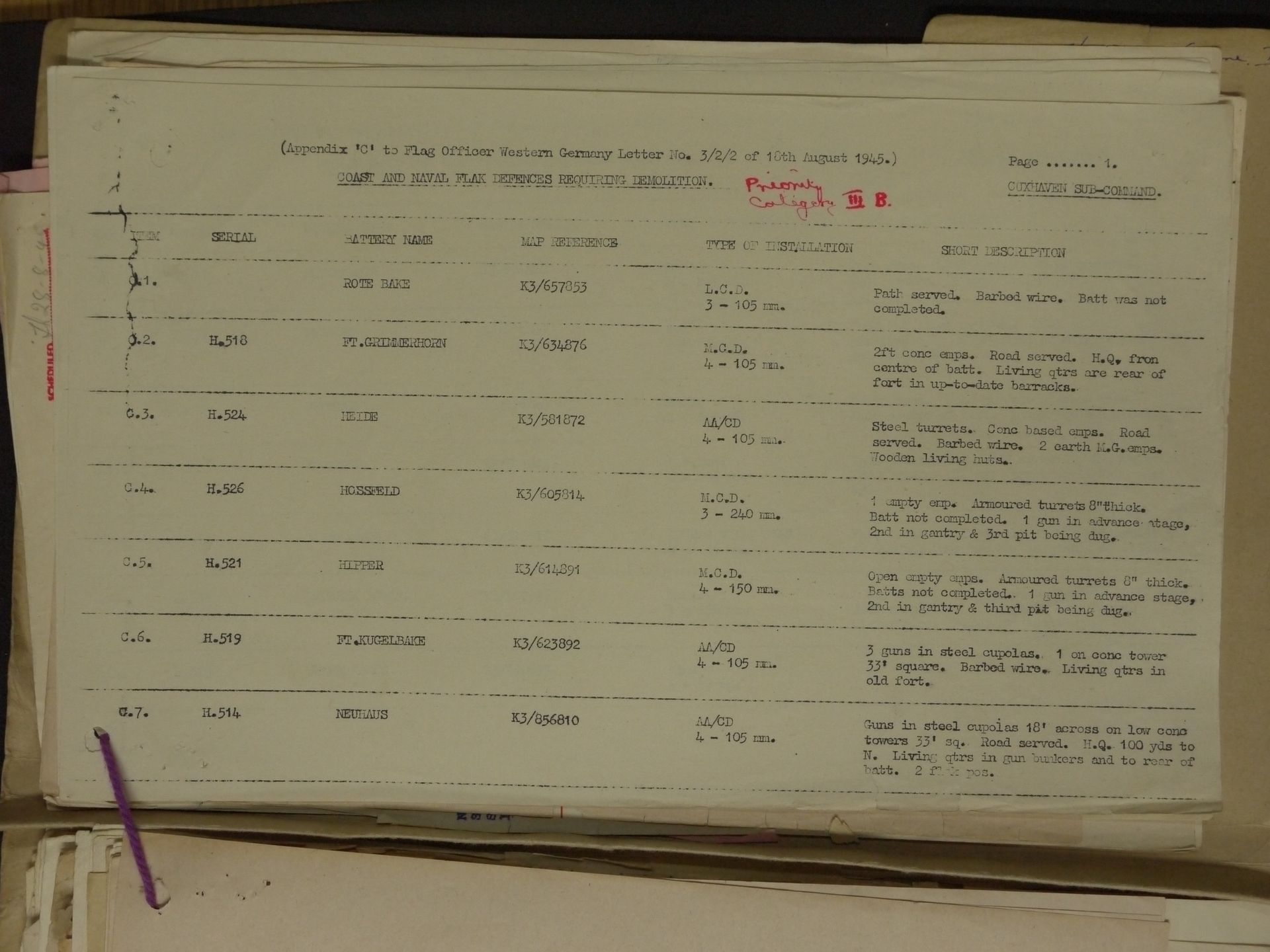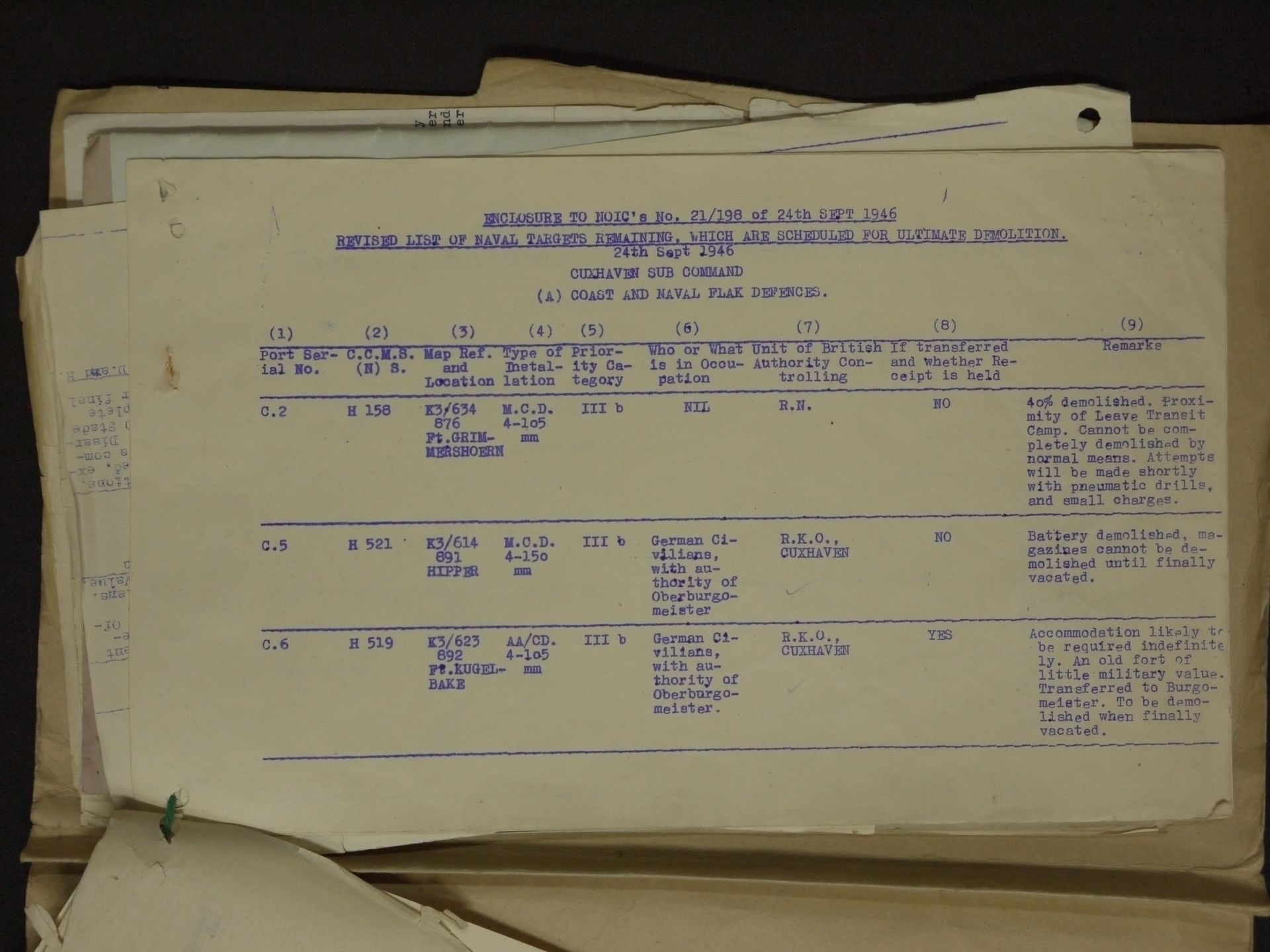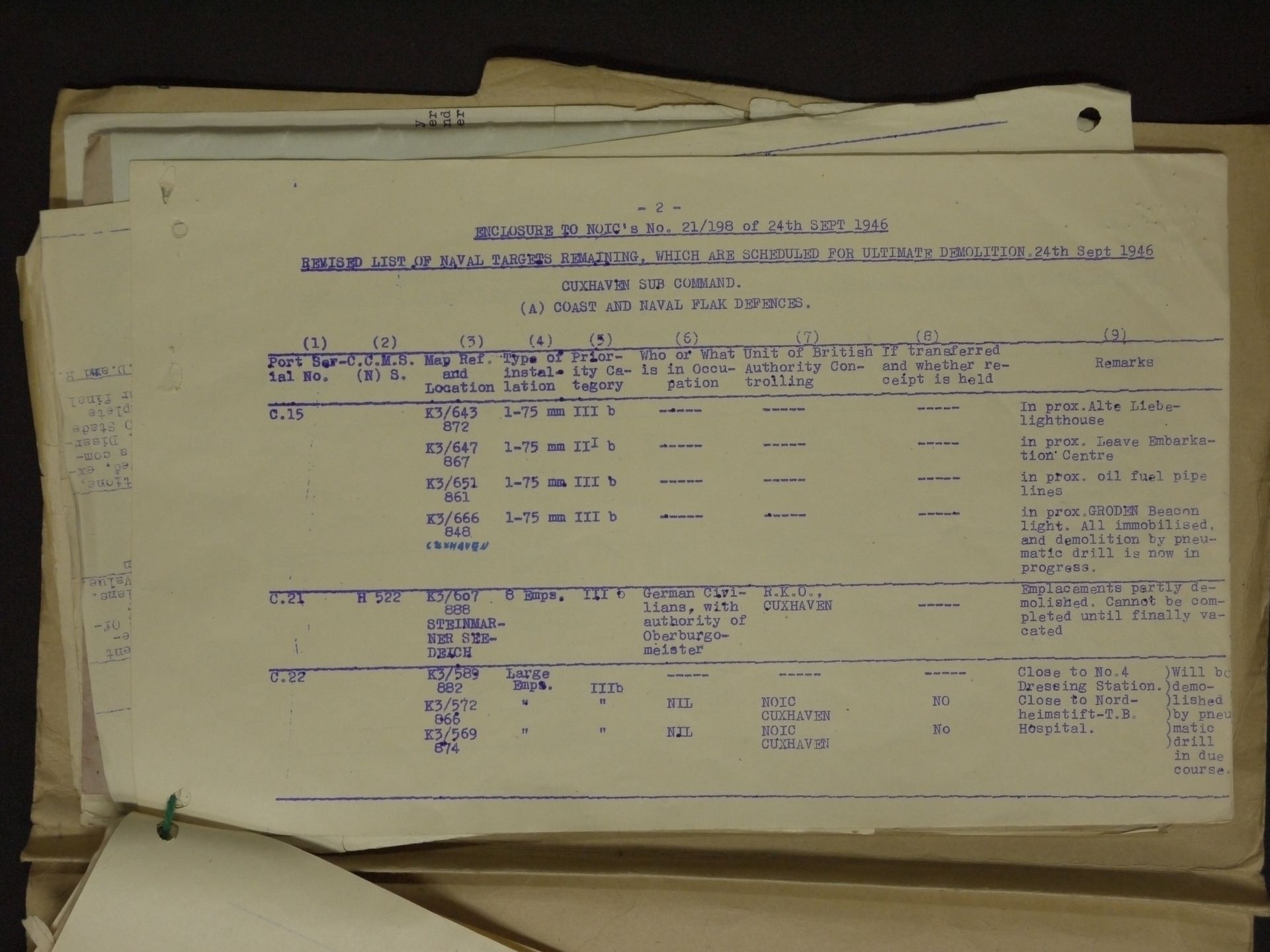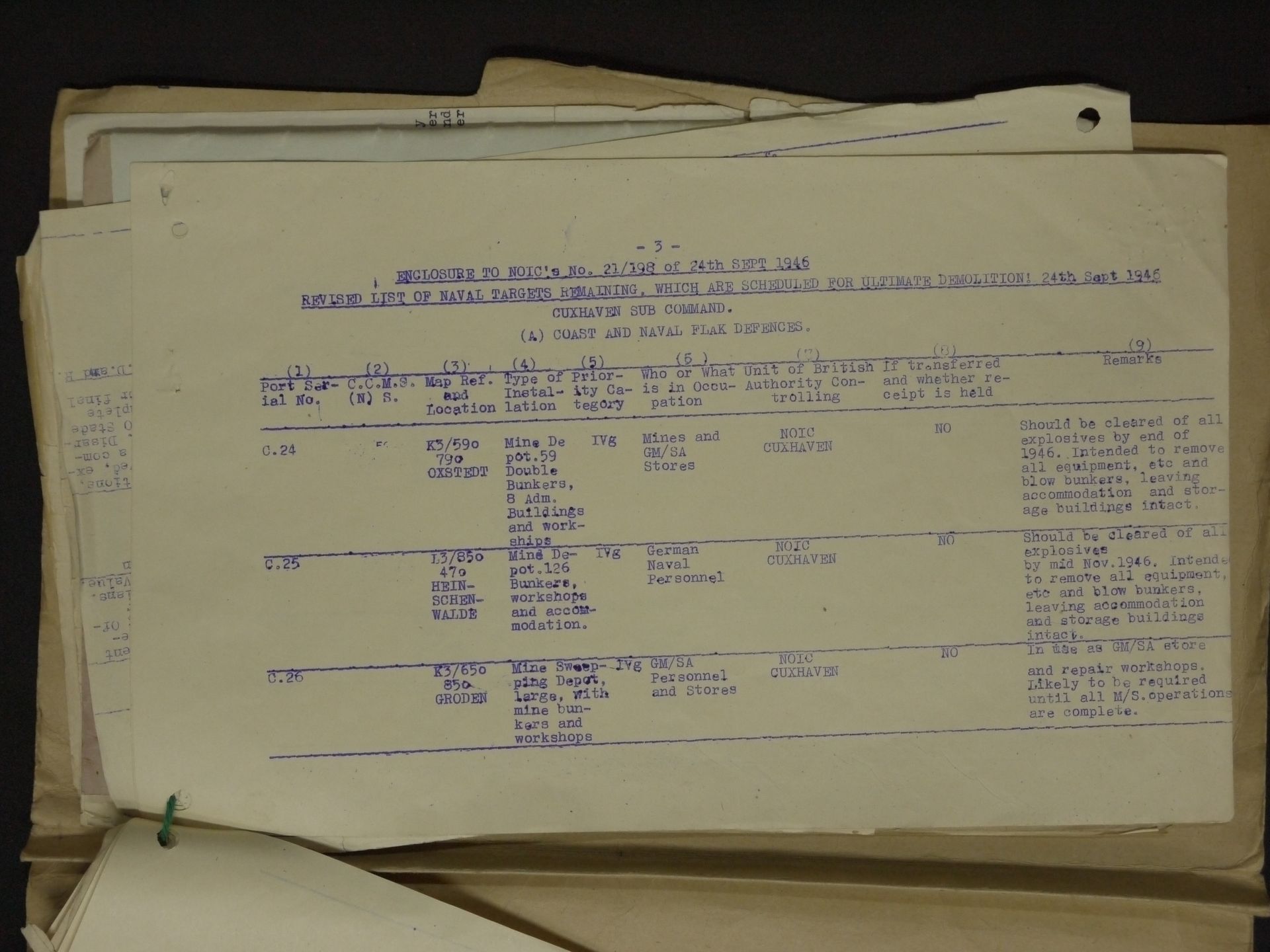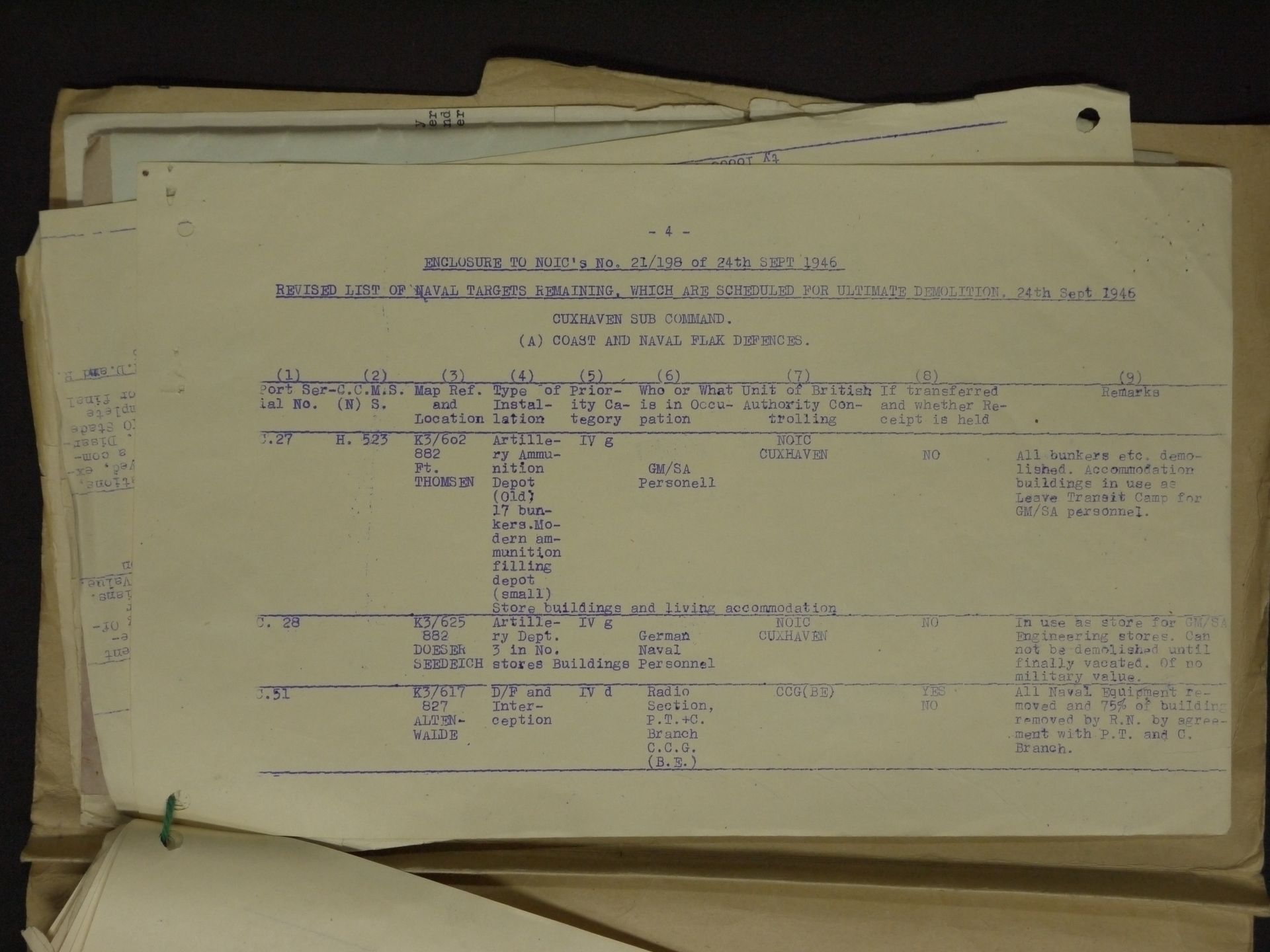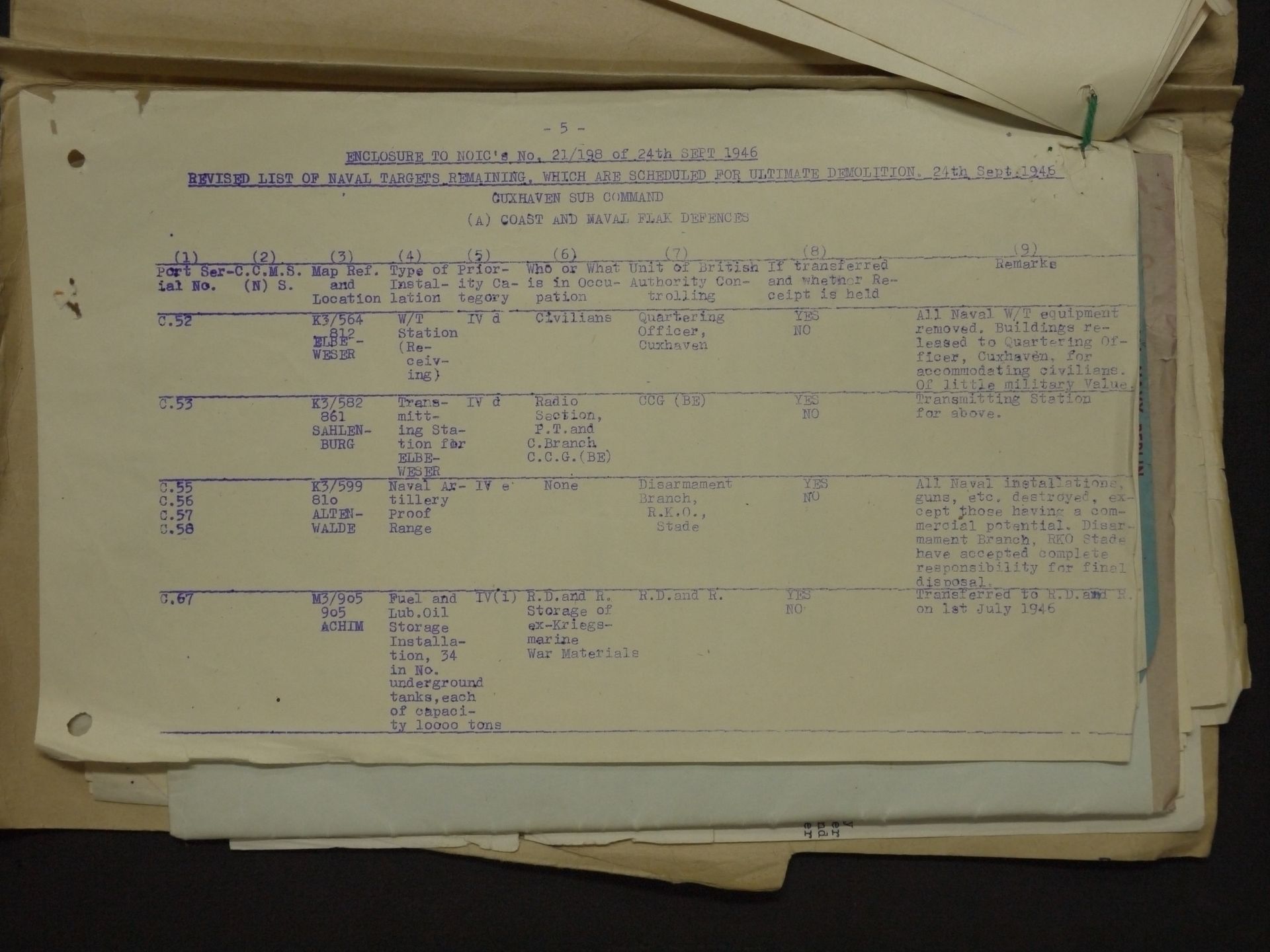
Marineartillerie (M.A.) bezeichnet das gesamte Artilleriewesen der Marine. Sie umfasst sowohl die Schiffsartillerie als auch die Küstenartillerie und die Marine-Flak. In der Kaiserlichen Marine wurde für die Angelegenheiten der Artillerie mit Kabinettsorder vom 21. August 1883 die Inspektion der Marineartillerie aufgestellt. Im Oktober 1904 wurde sie in die Inspektionen der Schiffs- und der Küstenartillerie geteilt.
Letztere
wurde zunächst zur Inspektion der Küstenartillerie und des Minenwesens erweitert.
In 1917 it was separated and the inspection of mines, barriers and explosives was separated out. These were technically subordinate to the Imperial Navy Office, and disciplinarily to one of the naval stations. In the Imperial Navy, the inspections were combined on September 30, 1919 to form the Inspection of Naval Artillery. It was based in Wilhelmshaven and subordinate to the North Sea Naval Station Command. In 1920, six coastal defense departments were set up, which were renamed Naval Artillery Departments (MAA) in 1926.After the French War of 1870-1871, the Empire also armed the coastal areas against future attacks from the sea. In the Cuxhaven area alone, three cannon fortresses and other artillery positions were built for this purpose. These included Fort Kugelbake, Fort Thomsen, Fort Grimmershörn and Grodener Schanze. Steinmarner Seedeich Battery, Kugelbake Shore Battery, Left Outer Embankment Battery, Right Outer Embankment Battery, Cannon Battery (Döse), Mortar Battery (Döse), Alte Liebe Battery, and the Molen Battery.
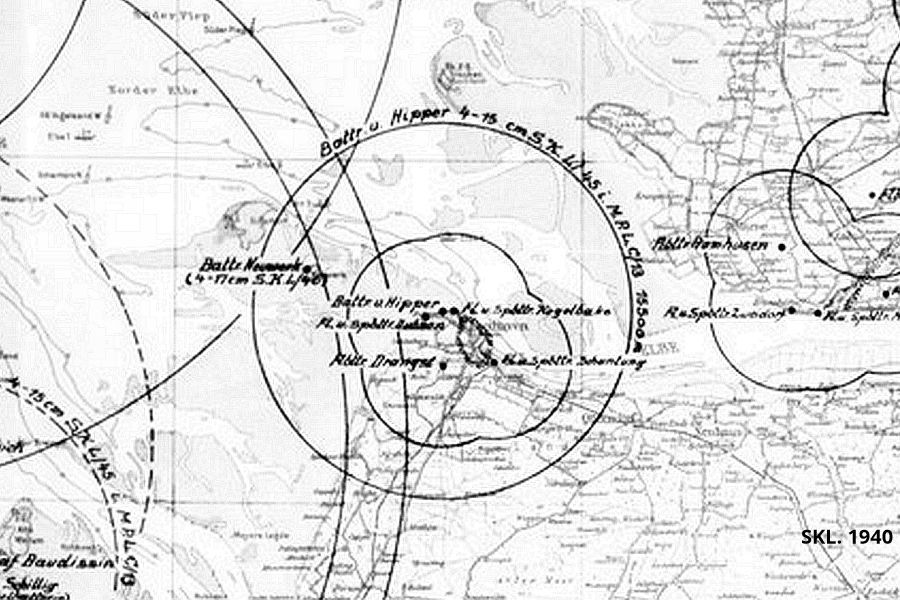
In the course of German rearmament, the naval artillery of the Kriegsmarine initially grew only slightly from 1935 onwards. At the beginning of the Second World War in 1939, there were seven naval artillery divisions along the German North and Baltic Sea coasts with a peacetime strength of a total of around 620 men.
In the course of the war, additional forces were added very quickly and on a large scale to ensure coastal defense in all occupied areas. Not all coastal artillery units belonged to the navy, but some also belonged to the army. Together they formed coastal defense lines such as the Atlantic Wall.Sources: MB, :https://de.wikipedia.org/wiki/Marineartillerie
The fortifications, artillery and air defence positions in the Cuxhaven area described in a French dossier (as of 1924)
At the beginning of the Second World War, the protection of the Cuxhaven coast consisted only of the "Hipper Battery" on the Steinmarn sea dike with its 15 cm guns. Only after the successful invasion of the Allies in French Normandy on June 6, 1944, did concerns about another landing in the area of the German North Sea coast grow. On April 20, 1944, the High Command of the North Sea Naval Station issued an order to reinforce the coastal strip and the islands in the German Bight following an order from Berlin. This involved expansion and new construction in the area of artillery and anti-aircraft positions, bunkers and fortifications, minefields and barbed wire barriers, etc. The Cuxhaven site was also affected by this with several military construction projects. In the course of this, the positions of the 15 cm cannons and 24 cm batteries Hossfeld in Altenwalde and the Stosch battery on Neuwerk were built.
IV. Marine Artillery Division
Die IV. Marine-Artillerie-Abteilung wurde 1920 aufgestellt und lag in Cuxhaven. Mit der Mobilmachung wurde sie am 26.08.1939 aufgelöst und in folgende Einheiten aufgeteilt.
4. Replacement Marine Artillery Division (Cuxhaven)Marine Artillery Division 134 (Sylt)Marine Flak Division 214 (Cuxhaven)Marine Flak Division 224 (Wilhelmsburg-Hademarschen)Marine Flak Division 234 (Blidsel/Sylt)Marine Flak Division 244 (Wesermünde)Marine Flak Division 254 (Burg/Dithmarschen)Marine Flak Division 264 (Hörnum/Sylt)Marine Flak Division 274 (Brunsbüttel)Marine Flak Division 284 (Westerland)Marine Flak Division 294 (Balje near Otterndorf)Source:https://www.feldgrau.com/ww2-german-marine-artillery-units/
4. Ersatz-Marineartillerieabteilung
Founded in September 1939 in Cuxhaven, Lower Saxony. The department was subordinate to the Cuxhaven section. In mid-1943 it was relocated from Cuxhaven to Cuxhaven-Altenwalde. On January 1, 1944, it was placed under the command of the 2nd Admiral of the North Sea and renamed the 12th Marine Replacement Division.Commanders:Lieutenant Captain Hans-Joachim Rahmlow (September 00, 1939 – January 00, 1940)Corvette Captain MA of the Reserve Ernst Reinhardt (January 00, 1940-January 00, 1941)Corvette Captain of the Reserve Heinz Tillessen (January 00, 1941 – February 00, 1943)Corvette Captain Fritz Thuns (March 00, 1943–December 31, 1943)Source: https://www.axishistory.com
12th Marine Replacement Division
Am 01.01.1944 in Cuxhaven aus der 4. Ersatz-Marineartillerieabteilung gebildet. Die Abteilung war dem 2. Marineersatzregiment und dann dem 4. Marineersatzregiment unterstellt.
Kommandeur:
Korvettenkapitän der Reserve Dr.phil. Helmut Firgau (01.01.1944– 05.1945)
Marine Artillery Division 114
The Marine Artillery Department 114 was established on 22.09.1944 and placed under the Cuxhaven Section.Assigned to it were the,
- MAA 2./114 - Battery Hossfeld (not completed)
- MAA 3./114 - Stosch Battery on the island of Neuwerk
- MAA 4./114 - Hipper Batteries
- 15,5 cm K418 (f) / Batterie Altenwalde
- Marine-Flak-Abteilung 214
Commander: Captain Lieutenant MA of the Reserve zV Dr.rer.pol. Fritz Eich (September 1944 – May 1945)
Secret Allied plans on the locations of military installations in the Cuxhaven district dated April 20, 1945. Since this date is before the end of the war, it is likely that this information is based on captured German secret plans and corresponding aerial reconnaissance.
Abkürzungen:
AA/CD = Schwere Marineflakbatterie, H.A.A. = Schwere Flakbatterie, M.C.B. = Mittlere Küstenbatterie (Artillerie), L.C.B = Leichte Küstenbatterie (Artillerie), H.C.B = Schwere Küstenbatterie (Artillerie), FdTp. = Feldkanonenstellung, TiedTP /Hows = Schwere Mörserbatterie.
Some of the Allied site names do not match the real names:
(0002) - Pos 1. Nordheim Foundation = Heavy anti-aircraft battery "Stand Heide"'(0003) - Pos 6. Duhnen = Anti-aircraft school Duhnen/Steinmarne, Pos 10. Left Aussendeich = Battery Hipper (artillery)(0004) - Pos 11. Westerwich = Heavy anti-aircraft battery Drangst(0007) - Pos 24,25,26 Buckedorf = Gudendorf
Plans on the development status of the military facilities in the Cuxhaven district and their subsequent dismantling.
Report of the MOK-Nord on the development status of the Cuxhaven naval artillery positions, as of the end of 1944.
Allied plan (ADM_228_1_0067) on the demilitarization of the facilities in the Cuxhaven area from August 1945.
Alliierter Plan (ADM_228_1_0199) zum Zustand der Demilitarisierung im Bereich Cuxhaven, Stand September 1946.
Alliierter Plan (ADM_228_1_0200) zum Zustand der Demilitarisierung im Bereich Cuxhaven, Stand September 1946.
Allied plan (ADM_228_1_0201) on the state of demilitarization in the Cuxhaven area, as of September 1946.




